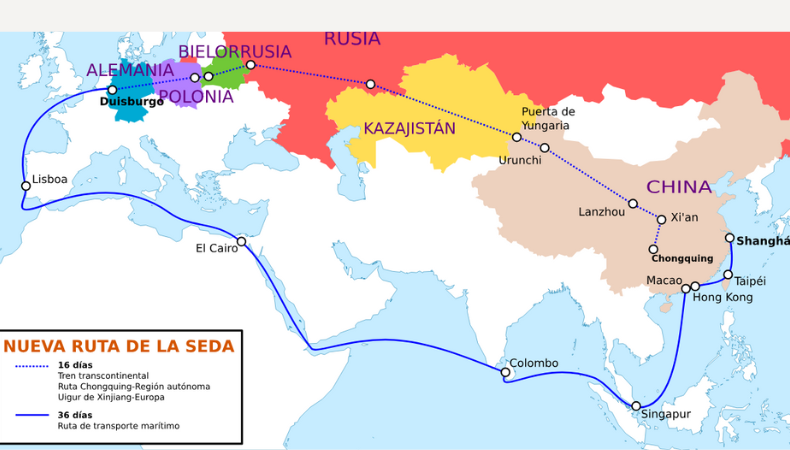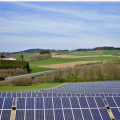The Modern Silk Road: A Catalyst for Economic Transformation for the Middle East and China

Linking Southeast Asia with the Middle East, North Africa, and the Mediterranean, the re-emergence of old trade routes has become a potent stimulus for economic expansion. This modern “Silk Road” is a sophisticated network promoting strong ties, significant cash flows, and unmatched technology innovations, not only a rewriting of historical lines.
Unheard-of Economic Possibility
Covering around five billion people and making about half of the world’s economy, these linked areas have enormous promise. This updated corridor elegantly combines state-of- the-art global logistics and digital infrastructure, therefore reflecting a strategic convergence of historical ties and modern innovations. The changing socioeconomic scene in these areas has made perfect ground for hitherto unheard-of cooperation. Nations in these corridors are seeing fast urbanization, increasing disposable incomes, and the explosion of technology improving quality of life and generating a dynamic atmosphere ready for corporate creativity and expansion.
Birth of New Markets
Driven by a young and technologically educated population, second and third-tier cities are creating new markets and remarkably increasing economic activity on an unparalleled scale. These cities are turning becoming centers of economic vitality drawing investments and encouraging creativity. The young people’s inclination for adopting digital tools, especially artificial intelligence (AI), helps the area to lead worldwide in technical innovation. Driving productivity, encouraging teamwork, and maintaining long-term economic growth all depend on using this potential.
Investment dynamics and strategic alliances
Historically seen as high-risk, nations in these corridors are turning into middle-class, robust nations. This change is drawing money and opening fresh capital flow paths. Manufacturing capabilities are growing and present many chances for cooperation and investment. With its outstanding GDP growth, the ASEAN area epitribes this tendency. ASEAN’s GDP has increased by thirty percent over the past ten years, much above the world average. Greater private wealth and an expanding consumer base resulting from this economic dynamism attract the region to worldwide investment.
Dedication to Economic Fusion
The spread of free trade agreements (FTAs) emphasizes the dedication of the area to economic integration. Strong commercial linkages between nations such Indonesia, Malaysia, and Singapore and the Middle East are being created. One particularly strong basis for ongoing development is the UAE’s Comprehensive Economic Partnership Agreement with Indonesia. These calculated alliances and financial agreements improve country development, scientific advancement, and socioeconomic change. The emphasis on building a suitable business climate draws international capital and stimulates national development.
Technologies and Demographic Dividend
The economic plan of the area revolves mostly on the demographic advantage of a young and technologically competent population. Given almost half of the population is under thirty, there is great room for invention and technology acceptance. Given 60 percent of GCC residents are under 30, this demographic dividend is especially noticeable in the Gulf. The young people’s inclination for adopting digital tools—including artificial intelligence (AI)—helps to establish the area as a worldwide technical innovator leader. Driving production, encouraging teamwork, and maintaining long-term economic growth all depend on using this potential.
Broad Markets and Consumer Foundations
The linked areas give companies large marketplaces and customer bases, so creating great chances for development, creativity, and expansion. Investors find the economic vitality of the area, better infrastructure, and rising healthy rivalry to be a profitable investment environment with great possible returns. Access to a young, tech-savvy populace and many finance sources helps startups since it provides rich ground for innovation and entrepreneurial activities. Rising sectors and more cross-border possibilities for workers translate into job creation, greater wages, and better standards of living.
Keep On Reading
Global Economic Growth’s Future
There are enormous chances for creativity, technology, and development all over the Silk Road. With this statistic climbing from 22 percent just over 20 years ago, Asia and the Middle East and North Africa (MENA) region presently account for over 50 percent of the world GDP. This does not seem to be slowing down, and this old trade route—which spans a millennium—looks destined to be the future of modern economic growth in these varied, but ever linked, areas. This refurbished corridor is not only a commercial route but also a guide for future economic development since it reflects a mix of historical relevance and contemporary invention.
Finally
The complex network of alliances, modern technology, and strategic projects guarantees that the Asia-MENA corridor will continue to be pillar of global economic growth for many years to go. The contemporary Silk Road is changing the economic scene and encouraging a fresh period of innovation spanning the past with the future. These areas will surely be very important in determining the global economy as they keep merging and developing since they present unmatched chances for companies, investors, and society both.







